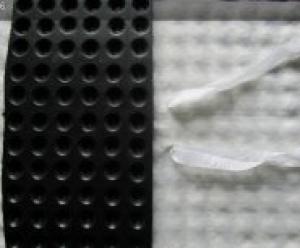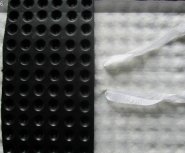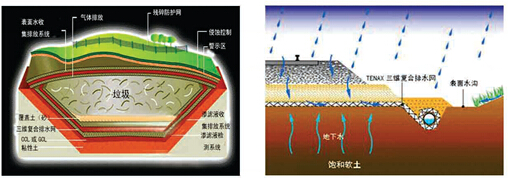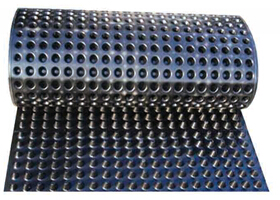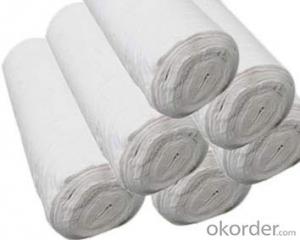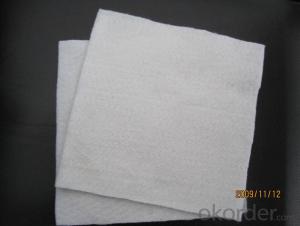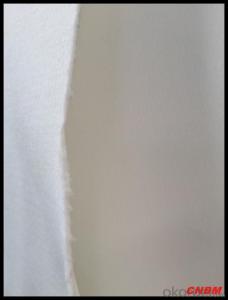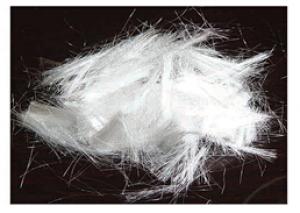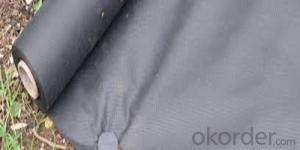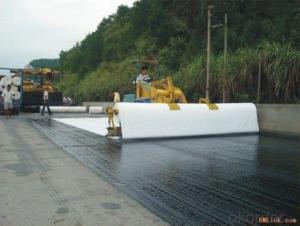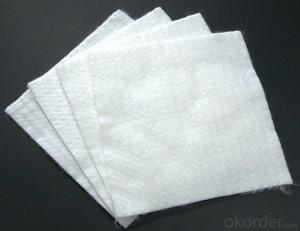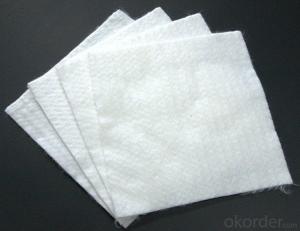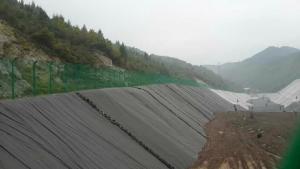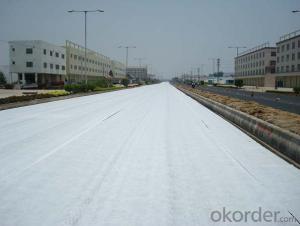Geotextil No Tejido De Polipropileno Composite Dimple Geomembrane for Highway Road Railway Building Material
- Loading Port:
- Tianjin
- Payment Terms:
- TT OR LC
- Min Order Qty:
- -
- Supply Capability:
- 5000rolls m²/month
OKorder Service Pledge
OKorder Financial Service
You Might Also Like
Composite Dimple Geomembrane for Highway Road Railway Building Material
It is a kind of geomembrane with dimples on the surface. The dimples can be in cylinder and semi cone shape. It could also be coated by non woven geotextile. The liquid and gas can go through freely between dimples.
Specification of Composite Dimple Geomembrane for highway road railway building material
Sheet material could be EVA or PE etc., thickness from 0.8mm t0 2. Omm, dimple height:
8mm, 15mm and 20mm, width from 2m t0 3m, composite layer is non woven geotextile, length could be made according to client' s request.
Property of Composite Dimple Geomembrane for highway road railway building material
I. Waterproofing and drainage: Form a channel, which water and gas can go through
2. Sound insulation and vibration isolation
3. Chemical resistance, resist to plants ' root
4. Easy for construction
5. Long lifetime
Application of Composite Dimple Geomembrane for highway road railway building material
I. Highway and railway waterproofing system
2. Underground waterproofing
3. Roof garden waterproofing projects
Production standard Composite Dimple Geomembrane for Highway Road Railway Building Material:
GB 18173.1-2012
- Q: What is a geotextile?
- A geotextile is a synthetic material that is used in civil engineering and construction projects to separate, filter, reinforce, or drain soil and other materials. It is designed to provide strength, stability, and durability to the soil, while also allowing water and other liquids to pass through.
- Q: Can geotextiles be used in geosynthetic reinforced walls?
- Yes, geotextiles can be used in geosynthetic reinforced walls. Geotextiles are commonly used as a separation layer between different soil types in reinforced walls to prevent soil mixing and promote proper drainage. Additionally, they can provide additional tensile strength and stability to the wall structure.
- Q: 400g / m2 two cloth a layer of water permeable geotextile technical requirements
- Two cloth a film will not be permeable, the composite film index breaking strength 5kn top broken 1.1kn tear 0.15kn peel 6n / cm or substrate fracture without stripping, the current 2008 standard weight has not been required, the original standard For not less than 360 grams
- Q: What are the uses of acupuncture geotextiles?
- Hello! You said there are two, the first is staple acupuncture non-woven geotextile, it is widely used in railways, highways, sports grounds, dam dams, water and soil construction, tunnels, coastal beaches, reclamation, environmental protection projects! The second is filament spunbonded acupuncture non-woven geotextile, which is widely used in the bottom of the landfill site, slope, closure of the reinforcement and protection, water conservancy project dam dam and slope of the filter, channel Isolation, seepage, road, rail, airport runway foundation isolation, filter ~ drainage! Soil slope, retaining wall and road reinforcement ~ drainage, port engineering soft foundation treatment, beach reclamation, port terminals and anti-slope reinforcement ~ drainage! I hope to help you, specializing in the production of geotechnical materials to answer!
- Q: Can geotextiles be used in the construction of landfills?
- Yes, geotextiles can be used in the construction of landfills. Geotextiles serve as a barrier to prevent the mixing of different types of soil layers, provide separation between different materials, and enhance the stability and strength of the landfill structure. They also help in controlling erosion and drainage within the landfill site.
- Q: What are the materials used for spinning geotextiles?
- Spinning is made of synthetic fibers through acupuncture or weaving made of permeable geosynthetics. There are at least two sets of parallel yarns (or flat yarn), a group of looms along the loom (the direction of fabric travel) called warp yarns, another group The horizontal arrangement is called weft yarn.With the different weaving equipment and the process, the warp and the weft are woven together into a cloth, and can be knitted into different thickness and density according to different use range. Generally, the spinning and weaving cloth is thin and vertical Have a very strong tensile strength (longitude than latitude), with good stability. There are spinning geotextile according to the weaving process and the use of latitude and longitude is divided into reinforced geotextile and non-reinforced geotextile two categories, plus The tensile strength of the geotextile is much larger than that of the ordinary geotextile, and the general application of the geotextile is reinforced with the reinforcement of the geotextile project. The main function is reinforced by reinforcement and has the function of plane isolation and protection. Can be selected according to the specific purpose of use.
- Q: What are the key factors affecting the creep behavior of geotextiles?
- The key factors affecting the creep behavior of geotextiles include the material properties of the geotextile itself, such as its tensile strength, elongation capacity, and viscoelastic behavior. The load applied to the geotextile, including the magnitude and duration, also plays a significant role in its creep behavior. Environmental conditions, such as temperature, moisture, and UV exposure, can further influence the creep performance of geotextiles. Additionally, the installation and stress transfer mechanisms between the geotextile and adjacent soils or structures can affect its creep behavior.
- Q: How do geotextiles contribute to green building certifications?
- Geotextiles contribute to green building certifications by providing sustainable and eco-friendly solutions for various construction applications. They can help improve stormwater management, erosion control, and soil stabilization, reducing the environmental impact of construction projects. By incorporating geotextiles in building designs, projects can meet the requirements of green building certifications that prioritize sustainable practices and materials.
- Q: Can geotextiles be used in coastal revetment projects?
- Yes, geotextiles can be used in coastal revetment projects. Geotextiles are commonly used in coastal engineering to reinforce and stabilize soil and sediment in coastal areas. They can be used as a filter layer to prevent erosion, as a barrier to control water flow, or as a reinforcement layer to enhance the stability of revetment structures. Geotextiles offer several advantages in coastal revetment projects, including improved durability, reduced maintenance, and increased resilience to wave action and tidal forces.
- Q: Can geotextiles be used in underground drainage systems?
- Yes, geotextiles can be used in underground drainage systems. They are commonly used as a filtration and separation layer in these systems to prevent the migration of fine particles and clogging of pipes. Geotextiles provide excellent soil retention and drainage properties, making them an effective solution for underground drainage systems.
Send your message to us
Geotextil No Tejido De Polipropileno Composite Dimple Geomembrane for Highway Road Railway Building Material
- Loading Port:
- Tianjin
- Payment Terms:
- TT OR LC
- Min Order Qty:
- -
- Supply Capability:
- 5000rolls m²/month
OKorder Service Pledge
OKorder Financial Service
Similar products
Hot products
Hot Searches
Related keywords
